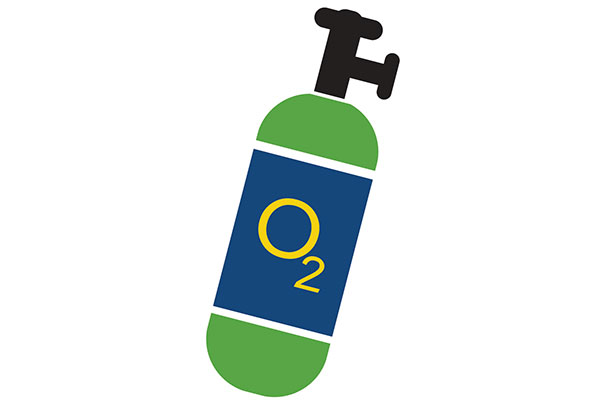Does marketing ever seem like an uphill battle? If you’re not equipped to climb the market’s peaks or navigate its valleys, marketing will always seem tougher than it needs to be.
Following certain essential principles can help. Be strategic. Stay disciplined. Adhere to a process. Only then can you be positioned to protect against risk and truly become successful.
I thought about this while reading Into Thin Air, an account of the mountain-climbing tragedy that unfolded on Mt. Everest 20 years ago this past spring. Nine climbers died during the two-day period chronicled in the book.
Two were expert climbers. One was considered the world’s best non-Sherpa mountaineer. A terrible storm claimed their lives.
The book’s author, standing atop the summit in the early afternoon of the fateful climb, describes the sky that day as having gone from perfectly clear to a blanket of clouds. Nothing, he writes, “suggested that a murderous storm was bearing down.”
This is where resemblance to marketing first jumped out at me: Things are not always what they seem.
What resonated with me the most, though, was the unanswerable question of why expert climbers did not heed their own steadfast beliefs. For taking risks they ostensibly knew were too high, they paid the ultimate price.
Marketing and mountaineering, for all their obvious differences, have a lot in common. Seen from the perspective of climbing the world’s tallest peak, the following essential marketing principles may take on more meaning for you.
The first step
Before we climb, we need skills and a certain level of physical ability. We must learn how to read clouds, test wind direction and understand implications created by changes in weather. Until we gain a high level of knowledge on many different fronts, we can’t begin planning.
In marketing, research is your starting point. Begin by studying fundamental and technical market indicators.
Fundamental analysis tells you what is happening in the market. It is data related to the products being traded, such as your milk and feed inputs.
Examples of this are herd size, milk production, import and export numbers, supply and demand statistics, and acres planted. As you analyze all the fundamental numbers, also keep in mind what could happen if the fundamental data shifts.
Technical analysis is the study of commodity markets rather than the products being traded. It can help you identify price targets to prepare for based upon what the charts reveal. When researching technical charts, you’re primarily concerned with price and volume.
Some will say technical analysis is like reading tea leaves. However, it’s important to know that every dot on a technical chart represents somebody making a buy or sell decision. What you’re doing is analyzing the summation of all buy and sell decisions that happened over a period of time in a particular market to discern potential trends.
Plan strategies
Planning an ascent of Everest can take one year or more. Once at the mountain base, preparation for the ascent takes weeks. The Everest climbers exhaustively reviewed every logistical detail, meticulously addressing food, gear, parts, medicine, communications schedules and more.

The lead Everest mountaineer’s strategy was to establish a series of base camps up the mountain. The main push to the summit would begin at the highest base camp. The process of establishing camps acclimatized climbers to the high altitudes and shortened the distance for the final ascent.
Marketing strategy defines what you’re going to do. As you develop strategies, think about how you might make cash sales and purchases for your milk and feed.
Consider hedging tools, from simple futures and options contracts to complex, layered strategies. Your comfort level, price goals and risk tolerance should determine the specific cash and hedging strategies and tools you implement.
One common strategy is to “scale in.” Using rising feed prices as an example, you would make incremental purchases over time instead of going “all in.” Your goal should be to build a favorable average purchase price over time.
Plan contingencies
The Everest climbers prepared for obstacles. Crevasses, or splits in ice, could be 80 feet wide and hundreds of feet deep. For some crossings, ladders were tied together end to end, the author writes, “bridging a sphincter-clenching chasm.” Seracs were a challenge. These massive blocks of unpredictable ice the size of office buildings can shift and give way without warning.
In marketing, you’re dealing with shifting prices. When prices move dramatically, stress grows. Fear, hope, greed and despair begin to influence decision-making. Your remedy: scenario planning.
Scenario planners think through the many price scenarios that could unfold and define in advance what they will do if the market presents those prices. They calculate potential impacts of market price volatility and determine which strategies will serve them best.
This past spring provided a feed-buying example. Early in the year, few farmers we spoke with were considering the possibilities of higher feed prices. Soybean meal was priced as low as $260 per ton in February.
Good scenario planners knew back then what they were going to do if prices began to rise – or fall further. They didn’t assume prices would remain low.
When soybean meal reached a May high of $398 per ton, scenario planners had already scaled in and executed their feed purchases.
Stay committed
The most accomplished climber among the Everest groups had reached the summit five times prior to the tragedy. He and others had developed an extensive process for reaching the summit and repeated it each climb. Why did they stray from their process? This is the unanswerable question.
When marketing, a primary reason farmers aren’t as successful as they’d like to be is the inconsistency with which they market. Is marketing a low priority for you when prices are good and a higher priority when they become bad?
When prices reside in the valley of price cycle, it’s too late to protect yourself. Just like when prices are frothy near the top, emotions tend to take over. Bad decisions get made. Consistency in marketing is essential to building a favorable, long-term average price.
Stay disciplined
Everest climbers develop key milestones to let them know whether they are on pace to reach the summit. When milestones are not met, they must execute pre-planned decisions. Chief among them: Stop the climb and return to camp.

The lead mountaineer led his group up Everest two hours past his determined stop point. Those who survived could only speculate why they didn’t turn around according to plan.
Discipline is woven through all stages of marketing, from initial research to execution of price triggers you will have set while developing strategies. If your strategies call for selling milk at a time when it appears the market will continue going up, do it.
Here’s why: Good marketers are not making any one decision in a vacuum. Decisions are inter-related. Each is part of a bigger goal: building a favorable average price. In the big picture, your success in marketing is determined by adherence to the systematic approach you have in place. ![]()
Illustration 1: Base Camp: Camps are the equivalent of scaling-in purchases or sales. Climbers move incrementally up a mountain. Marketers move step-by-step to achieve favorable price averages over the long term. Neither should reach for the summit all at once.
Illustration 2: Stops and Triggers: A planned turnaround time on a mountain is similar to a price trigger. There is a window of time to execute on previously made decisions. When there’s no discipline to execute, important windows close and mistakes can occur.
Illustration 3: Additional Support: Marketing support comes in many different forms. Outside research; help from a family member; your lender, financial planner and market analyst; like oxygen, some or all are necessary forms of support on your marketing journey. Illustrations provided by Patrick Patton.

-
Patrick Patton
- President
- Stewart-Peterson Inc.
- Email Patrick Patton







